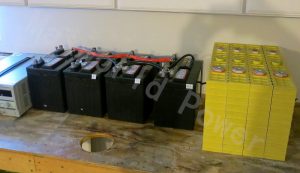How to choose the best lifepo4 battery?
When our business got to a point where batteries were firmly on the expansion list, we embarked on a 24-month journey of researching, designing, creating dozens of prototypes, testing, more research, developing new specifications, torture testing in Oz, reading a lot of information in the industry about these things to find out what customers really wanted, I think my head would explode. But the more I read, the more we do the more testing, charging, test analysis, and age, the more I firmly believe that choosing the best LiFePO4 battery is the only choice in the future, every day so far or regularly use deep cycle batteries are the best choice. If you are only a casual user of batteries (ie. Once a month on a weekend trip), there is no weight problem, or no higher upfront costs budget, then the AGM is still the best choice for you, as long as you have the right size. I will use 100 ah LiFePO4 and leading brand 160 ah AGM as the examples in this article, and an average of 80 ah daily demand for electricity.
HOW TO CHOOSE THE BEST LIFEPO4 BATTERY?
WEIGHT AND SPACE

In every 80 ah battery, for example, you need 160 ah AGM (50% DoD) or 100 ah LiFePO4 (80% DoD), to meet the same consumption of 80 ampere-hours a day. The 80ah battery is equipped with the exclusive customized internal battery management system and weighs only 10.9kg, while the industry-leading 160ah AGM weighs 50.2kg. Although this is a great AGM battery, AGM is five times its weight, 200 mm long and 40 mm wide, but its physical volume is almost twice the AGM. Most SUVs, whether buggies, camping trailer, or caravan has weight and space constraints, and have a half size, weight, the choice of 1/5 is a major advantage. If your day power consumption is doubled (many people use so many a day), please take a minute to think about the same situation. The requirement is 20 kg to 100 kg in weight when choosing the best LiFepo4 battery.
PRICE
You may have seen some popular models of LiFePO4 battery prices. Some 12 v 100 ah battery priced at more than $4000. Yes, they might have Bluetooth mobile phone monitoring, BMS interconnection, and brand label, but their design life cycle and expectations with most other quality brands do not have too big a difference, you only need to pay for the brand name. At the other end of the scale, you will also see some products’ maximum discharge current was only about 30-50 amperes, just enough for a very small inverter power supply (500 w), and the cycle is much lower expectations. They are cheap, and often use dozens of low reliability of cylindrical batteries, once a cell death, the rest of the battery will soon die due to overcharge.
CHARGING

This is what most people completely ignore as a key advantage of lithium iron phosphate batteries when they want to get the best LiFepo4 battery. These two kinds of batteries during discharge require a “large capacity or booster charge”, at this time, the charging current needed to apply, until the batteries achieve the required voltage. In Li Fe PO battery charging current will always keep a suggestion (usually 0.2 0.3 C) to 100%, then stop charging. It will be faster absorption current efficiency (about 92-95%) and let your battery soon be filled (assuming that the charging system right size). A lead-acid battery cannot handle 100% of full charge current, take hours to reach 100% of lower current and constant voltage. They are in a period of about 70-80% efficiency of charging accept need more power to charge the same ampere hour, every day.
What does this mean? For example, if you want to use 400 w solar cells, and the average output per hour of about 20-ampere current then is about four hours in the morning to get your life back to 100%, and then enter the monitor or maintenance mode. Best of LiFePO4 no-load (floating) charge level, there is a technical issue, but it is another article, most people will feel bored. If you want to learn more, please write to me. Solar output, using the same AGM will be done in a similar time frame batch charging stage, about 80-85%, but the absorption phase fell to a low current in amperes, keeping voltage stability, and takes 4 to 6 hours to the battery fully recovered to 100%. The equivalent of solar energy utilization and low efficiency, compared with LiFePO4, needs more solar watts. You still need the size of 400 w (in this case) to provide a large capacity in the morning, so that you will have the rest of the sunshine time to complete the process. For LiFePO4, it will accept your offer of any current (within the scope of design parameters), until almost full of current, then tapering (tail or terminate current) to 100%. Because it’s in a shorter period of time to achieve 100% of the energy saving, therefore, compared with the AGM, you can reduce the requirement for solar energy.
SUMMARY:
If you are used everyday in batteries, or long-term camping outside the grid, then the LiFePO4 is by far the most cost-effective choice for a long time. If you use only once a month, unless you have a weight or space problem, otherwise stick to LA. Yes, they are more in advance, but in the long run, less each ah and each cycle. You will also need fewer solar watts, charge because it is faster, and take up less space, and using the best LiFePO4 battery, will reduce the weight of the vehicle. In the same size of the battery, it can provide more available for you ah, or make your ah capacity greatly reduce overall.












